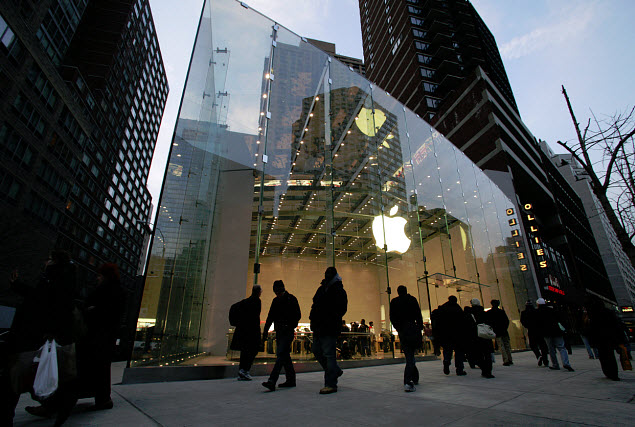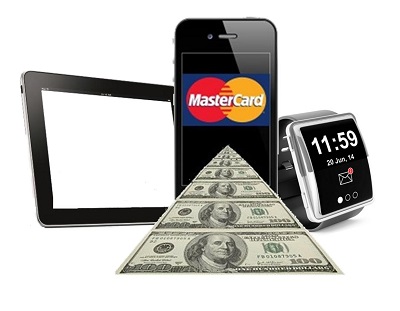In advance of the launch of the holiday shopping season, iPhone and iPad users now have new ways to buy.
Before the holiday shopping season has had its official launch, Apple has just revealed a new strategy for taking part in this highly profitable time of year by adding mobile commerce apps as its own shopping category in its App Store.
The idea is to help to make it easier for consumers to more easily find the shopping apps they want to use.
Now, both iPhone and iPad users will see an entirely new Shopping app available in the category lists at the App Store, so they will be able to discover all the available mobile commerce applications. Before this change was made, shopping apps had been included as a part of the broader lifestyle section of the App Store. Now, they will have their own category, bringing the number of mobile application categories at Apple up to 25.
This new mobile commerce app channel will experience its official launch as of November 5.
 This will ensure that the m-commerce category will be available to the Western world in time for the holiday shopping season, and that it will also be available for the start of China’s equivalent to Black Friday, which is called Singles Day and that lands on November 11, this year.
This will ensure that the m-commerce category will be available to the Western world in time for the holiday shopping season, and that it will also be available for the start of China’s equivalent to Black Friday, which is called Singles Day and that lands on November 11, this year.
Apple has stated that launching this new channel, made a lot of sense for better serving its users, as mobile shopping has become quite popular among iPhone and iPad users and because this popularity is only growing. A great deal of the e-commerce traffic that is being experienced around the world is coming from mobile devices as opposed to being exclusively from personal computers. In fact, the Flurry app analytics service has said that there was a growth in the use of m-commerce apps by 174 percent throughout 2014.
That would make mobile commerce the fastest growing app category in 2014. Moreover, a recent survey conducted by Google has revealed that 54 percent of holiday shoppers intend to use their smartphones to do at least some of their holiday shopping this year.
This will make it possible for devices, wearable technology and accessories to be used to pay for purchases.
MasterCard has now introduced a new program that has been designed to bring the brand’s mobile payments to a broader spectrum of different types of electronic consumer products.
These include wearables, fashion, automotive, and a range of other categories that haven’t yet been invented.
The program is meant to make it possible for mobile payments to use whatever gadget or device is most convenient for them, so that they can complete mobile payments using the highest available level of security. The launch of the program has come with a number of big name participants that include General Motors, as well as celebrity designer Adam Selman, as well as the Ringly smart jewelry company and the wearable technology firm, Nymi, in addition to the TrackR Bluetooth locator brand. These are only some of the names that have already joined in to take part in the program through their products.
The Money 20/20 conference in Las Vegas played host to the original display of the mobile payments prototypes.
 This step forward in payment technology and hyper-connectivity is a large one for the Internet of Things (IoT). This will help to make it possible for practically every device used by consumers – from major appliances to vehicles and wearables – to be linked by way of the internet. This will completely revolutionize the way consumers interact and the way they complete various transactions.
This step forward in payment technology and hyper-connectivity is a large one for the Internet of Things (IoT). This will help to make it possible for practically every device used by consumers – from major appliances to vehicles and wearables – to be linked by way of the internet. This will completely revolutionize the way consumers interact and the way they complete various transactions.
Cisco has predicted that by the year 2020, there will be 50 billion connected devices. MasterCard is clearly hoping to play a major part in this technological advancement as it establishes this mobile payments program as a foundation of the IoT. The program, itself, is designed to be an additional branch from the MasterCard Digital Enablement Service (MDES) as well as its Digital Enablement Express program (also known as simply “Express”). By bringing MDES and Express together, it would mean that virtually any kind of device could be securely payment-enabled and linked to a MasterCard account so that it can be used to complete transactions to purchase products and services.
 This will ensure that the m-commerce category will be available to the Western world in time for the holiday shopping season, and that it will also be available for the start of China’s equivalent to Black Friday, which is called Singles Day and that lands on November 11, this year.
This will ensure that the m-commerce category will be available to the Western world in time for the holiday shopping season, and that it will also be available for the start of China’s equivalent to Black Friday, which is called Singles Day and that lands on November 11, this year.
 This step forward in payment technology and hyper-connectivity is a large one for the Internet of Things (IoT). This will help to make it possible for practically every device used by consumers – from major appliances to vehicles and wearables – to be linked by way of the internet. This will completely revolutionize the way consumers interact and the way they complete various transactions.
This step forward in payment technology and hyper-connectivity is a large one for the Internet of Things (IoT). This will help to make it possible for practically every device used by consumers – from major appliances to vehicles and wearables – to be linked by way of the internet. This will completely revolutionize the way consumers interact and the way they complete various transactions.